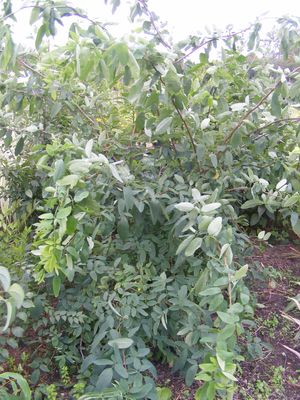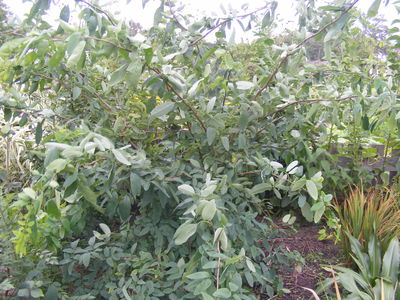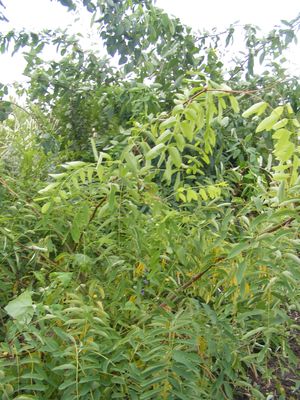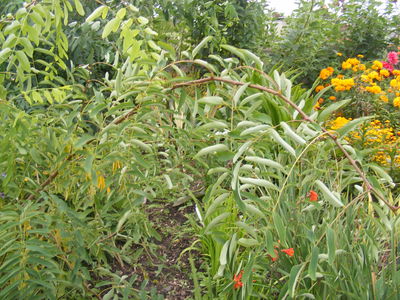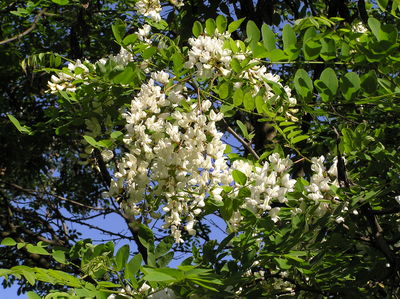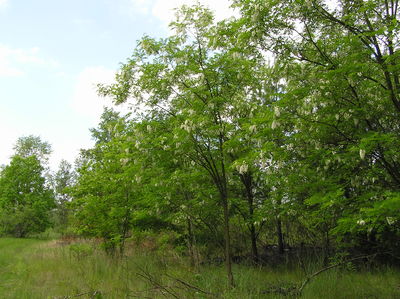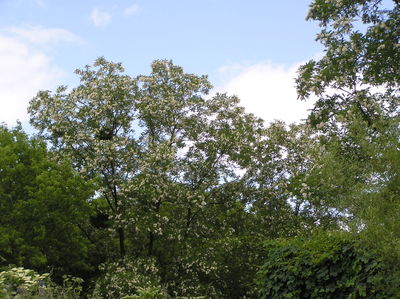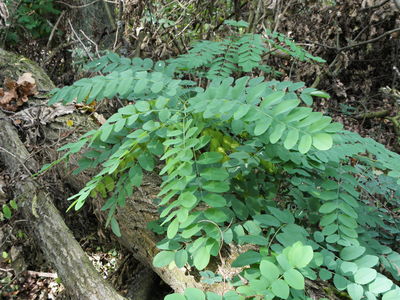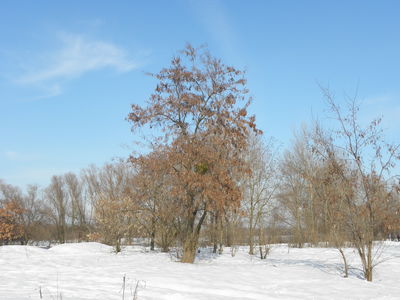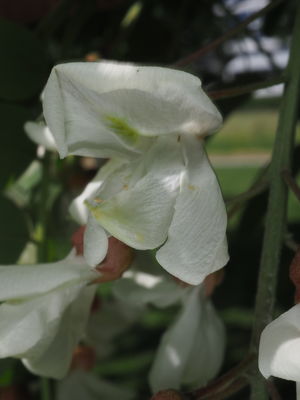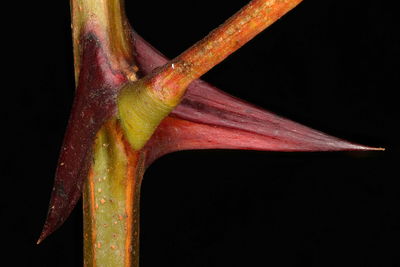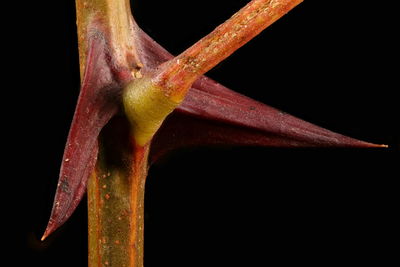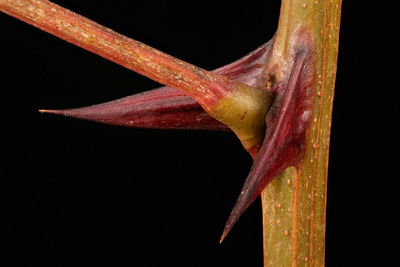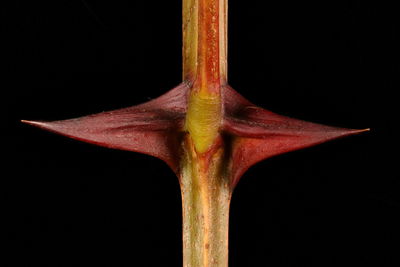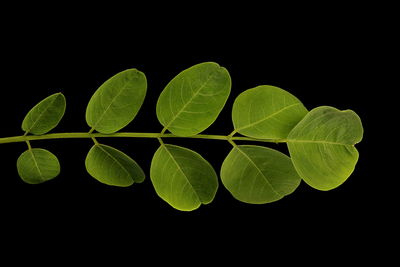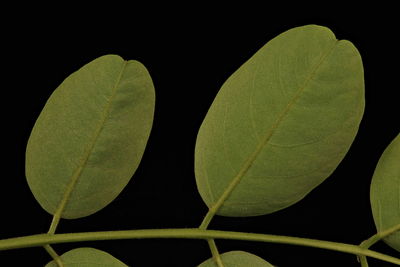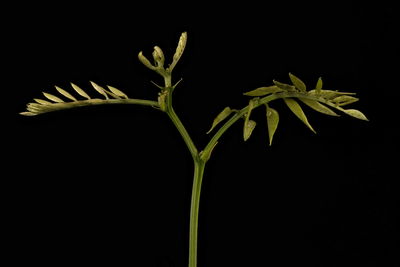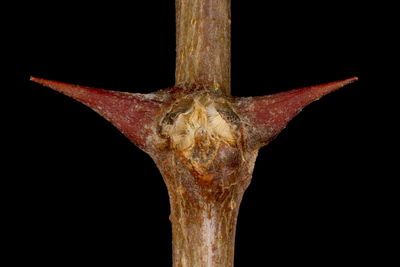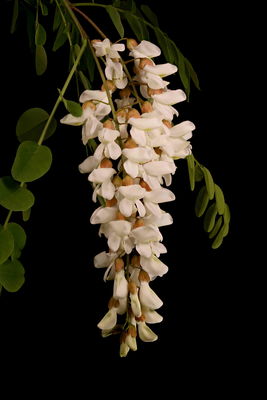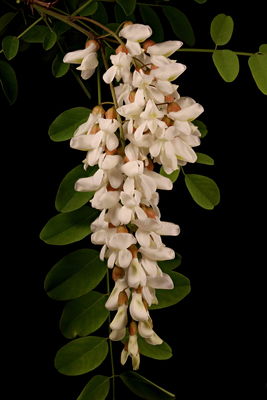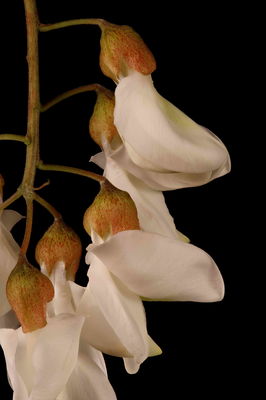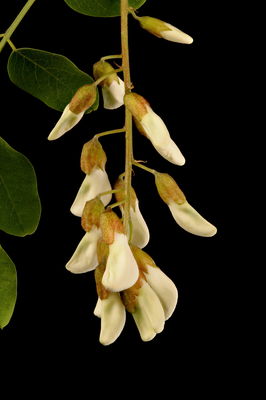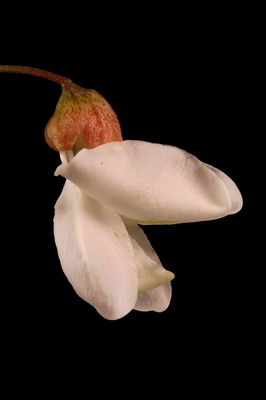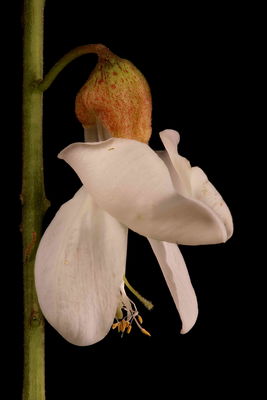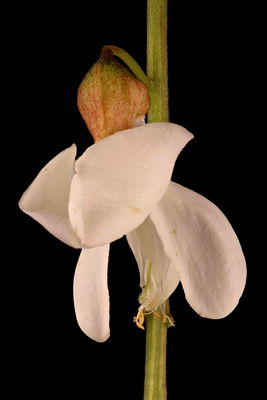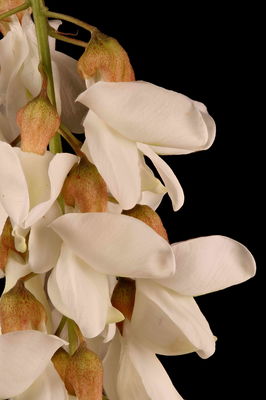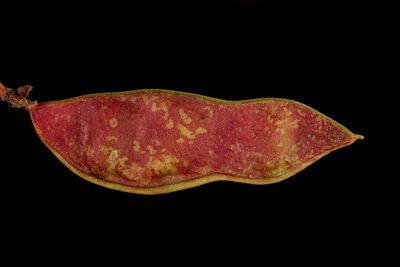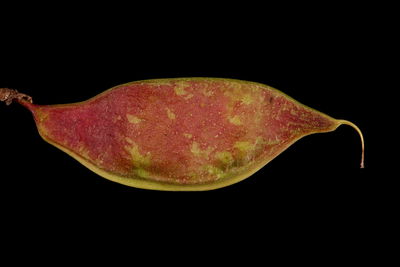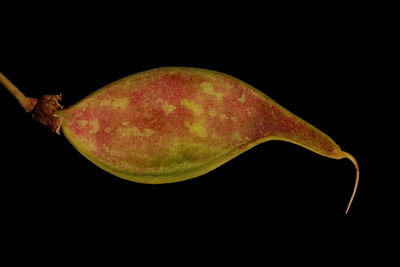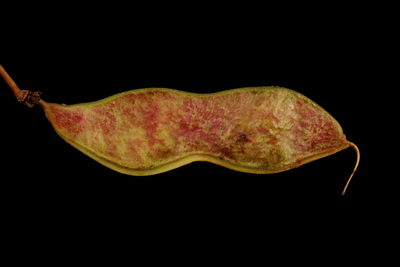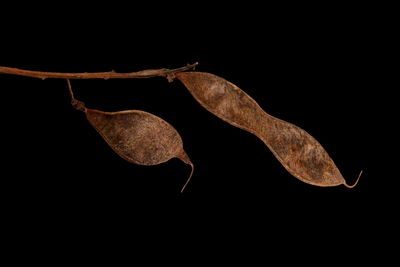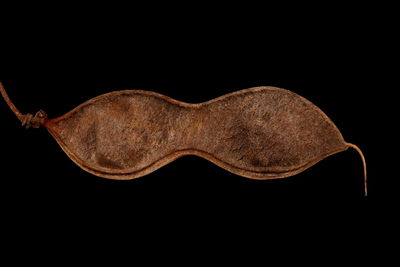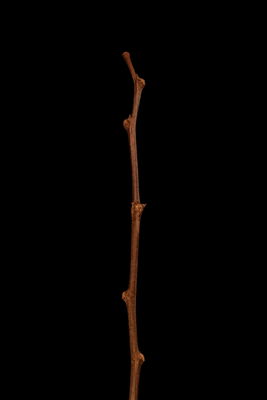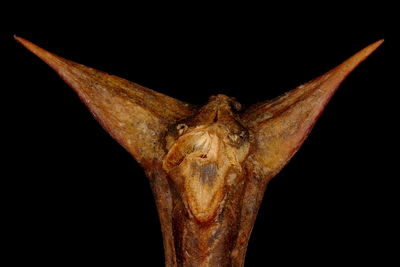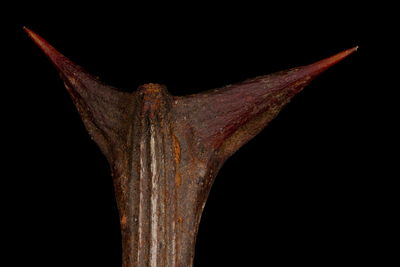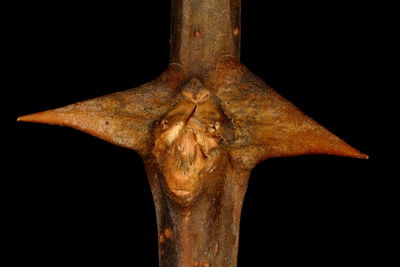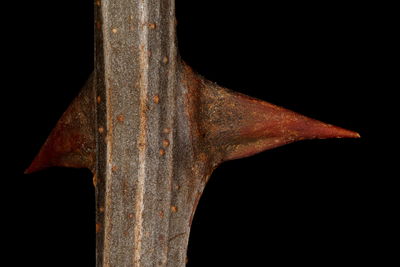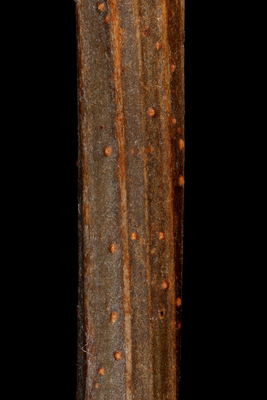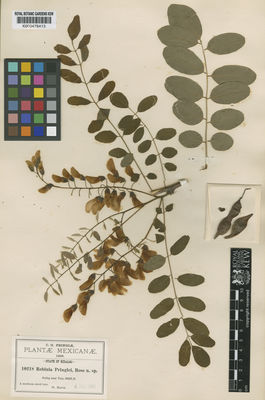Geography and distribution
Black locust is native to southeastern North America and has also been introduced to Britain and parts of Western Europe, as far north as the Netherlands. It is widely cultivated elsewhere and can become invasive.
Description
Overview: Black locust is a tree up to 25 m high with a rounded crown and a trunk up to 1 m in diameter. Its grey-brown bark is rough and deeply furrowed. Black locust trees often produce suckers (shoots which come out of the ground some distance from the main trunk). The sucker shoots and young branches are usually armed with spines (formed from pairs of stipules, leaf-like structures on the base of the leaf, that become woody and sharp with age).
Leaves: The leaves are pinnate (divided into a central axis bearing leaflets) with 3-11 pairs of oval leaflets and one extra terminal leaflet. At maturity the leaflets are almost hairless.
Flowers: The scented flowers are 15-20 mm long. The calyx (outer whorl of floral organs) is reddish-purple, and the petals are white (the standard petal having a basal yellow blotch). The stalked flowers are clustered into showy, hanging racemes.
Fruits: The fruits are linear-oblong, hairless pods, with the upper suture (margin) slightly winged, and there are 4-10 seeds per pod.
Naming of the genus
The genus Robinia was named by the Swedish botanist Carl Linnaeus in honour of the French botanist Jean Robin (1550-1662) and his son Vespasien Robin (1579-1662), royal gardeners to Henry IV of France. It was Vespasien who first planted a specimen of R. pseudoacacia in the Jardin des Plantes in Paris in 1601, and the species was introduced to England soon after. A specimen of R. pseudoacacia planted in 1762 is one of the oldest trees currently standing in the Royal Botanic Gardens, Kew.
Threats and conservation
Black locust is a common, widespread species and is not considered to be threatened.
Uses
Robinia pseudoacacia is cultivated widely as an ornamental. Numerous cultivars have been bred in Europe, including some elegant leaf and flower colour forms, and a number of hybrids exist. In France, trees are sometimes heavily infested with mistletoe ( Viscum album ), which is harvested for medicinal and decorative uses.
In the 18th century, the decay-resistant wood of black locust was used for fence posts, floors and cart wheels.
The flowers are a nectar source for bees and yield a high quality honey, which is gathered in Europe and North America. The fragrant flowers are also used in perfumery.
Black locust is also planted to control erosion and is used for soil enrichment (it is a nitrogen fixer, by means of bacteria inside special root nodules).
Known hazards
Some parts of the plant are toxic, particularly the bark, and poisoning of humans and livestock has occasionally been reported. Buildings have been damaged as a result of large branches breaking off mature street trees. Its sharp thorns are also a hazard.
Millennium Seed Bank: Saving seeds
The Millennium Seed Bank Partnership aims to save plant life worldwide, focusing on plants under threat and those of most use in the future. Seeds are dried, packaged and stored at a sub-zero temperature in our seed bank vault.
Five collections of Robinia pseudoacacia seeds are held in Kew's Millennium Seed Bank based at Wakehurst in West Sussex.
See Kew's Seed Information Database for further information on Robinia pseudoacacia seeds
Cultivation
Black locust can be propagated by seed, root cuttings or sucker shoots. Some pruning of the shoots of young specimen trees in winter strengthens the following year's growth and reduces wind damage of the somewhat brittle branches. To avoid the loss of main branches, older trees should be kept to a single leader until seven or eight metres high, so that a strong, straight trunk is formed.
This species at Kew
A specimen of black locust planted in 1762 can be seen growing adjacent to the wisteria arch and Secluded Garden, near Elizabeth Gate at Kew.
Black locust (
Robinia pseudoacacia ) at Kew Gardens
Pressed and dried specimens of Robinia pseudoacacia are held in Kew's Herbarium, where they are available to researchers by appointment.
Specimens of the wood and bark of black locust are held in Kew's Economic Botany Collection in the Sir Joseph Banks Building, where they are available to researchers by appointment.
Kew's 'Old Lions'
Kew's 'Old Lions' are some of the few remaining trees with the oldest actual known planting date of 1762. They comprise: Ginkgo biloba (maidenhair tree), Styphnolobium japonicum (pagoda tree) and Platanus orientalis (oriental plane) to the west of the Princess of Wales Conservatory; Robinia pseudoacacia (black locust) on the lawn to the front of the Orangery; and Zelkova carpinifolia (Caucasian elm) situated in the Herbarium paddock.
Some of these trees were brought from a neighbouring estate at Whitton which belonged to the Duke of Argyll (the uncle of Lord Bute, the botanical advisor to Princess Augusta). They became part of a new five-acre arboretum, laid out by William Aiton, which sat next to the Orangery.
Now, 250 years after these trees were planted, Kew is celebrating the 'Old Lions', which can be seen in all their splendour, still growing in the Gardens.





